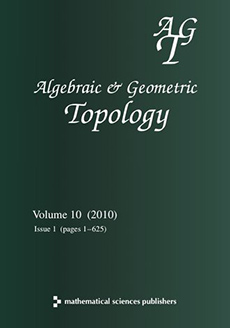Abstract
In the mid eighties Goldman proved that an embedded closed curve could be isotoped to not intersect a given closed geodesic if and only if their Lie bracket (as defined in that work) vanished. Goldman asked for a topological proof and about extensions of the conclusion to curves with self-intersection. Turaev, in the late eighties, asked about characterizing simple closed curves algebraically, in terms of the same Lie structure. We show how the Goldman bracket answers these questions for all finite type surfaces. In fact we count self-intersection numbers and mutual intersection numbers for all finite type orientable orbifolds in terms of a new Lie bracket operation, extending Goldman’s. The arguments are purely topological, or based on elementary ideas from hyperbolic geometry.
These results are intended to be used to recognize hyperbolic and Seifert vertices and the gluing graph in the geometrization of three-manifolds. The recognition is based on the structure of the string topology bracket of three-manifolds.
Citation
Moira Chas. Siddhartha Gadgil. "The extended Goldman bracket determines intersection numbers for surfaces and orbifolds." Algebr. Geom. Topol. 16 (5) 2813 - 2838, 2016. https://doi.org/10.2140/agt.2016.16.2813
Information





